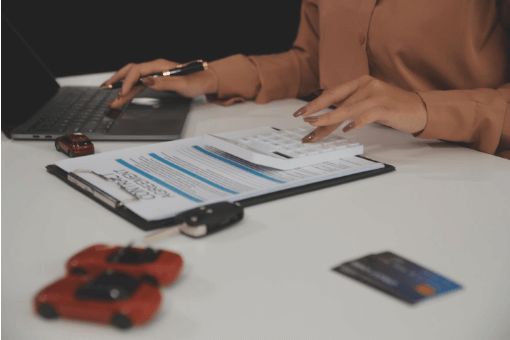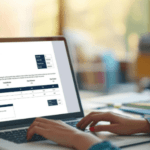Recording journal entries accurately is a key part of managing your accounts payable (AP) process. Whether you’re tracking invoices, recording purchases, or making payments, the right invoice journal entry accounts payable ensures your financial records stay clean and compliant.
In this blog, we’ll walk you through what an accounts payable journal entry is, how to record different types of transactions, and the 5 stages of the AP process—all explained with examples that are easy to follow.
Table of Contents
- What Is a Journal Entry For Accounts Payable?
- How Should You Record Your Account Payable Journal Entries: Examples
- Purchase of merchandise inventory
- Inventory return
- Asset purchases
- Service-based expenses
- Payment to creditors
- 5 Stages of the Account Payable Process
What Is a Journal Entry For Accounts Payable?

A journal entry for accounts payable is the record of a business transaction that involves a payment obligation to a vendor or supplier. It typically includes debiting the related expense or asset account and crediting the accounts payable account.
For example, if you receive an invoice for office supplies purchased on credit, you’d record a debit to your Supplies Expense and a credit to Accounts Payable.
These entries help track what you owe, when payments are due, and how those liabilities impact your financial statements.
How Should You Record Your Account Payable Journal Entries: Examples

Here are some common accounts payable journal entry examples based on real-world business scenarios. These will help you understand how to record each type of transaction properly.
1 – Purchase of the Merchandise Inventory on Account:
Scenario: You purchase inventory worth AED 50,000 from a supplier on credit.
Journal Entry:
- Debit: Inventory – AED 50,000
- Credit: Accounts Payable – AED 50,000
This entry records the increase in your inventory and the liability to pay the supplier.
2 – Damaged or Undesirable Inventory Returned to the Supplier:
Scenario: You return AED 5,000 worth of damaged goods to the supplier.
Journal Entry:
- Debit: Accounts Payable – AED 5,000
- Credit: Inventory – AED 5,000
This reduces both your liability and your inventory balance.
3 – Entry When There Is the Purchase of Assets Other Than the Merchandise Inventory on Account:
Scenario: You buy office furniture worth AED 30,000 on credit.
Journal Entry:
- Debit: Office Furniture (Asset) – AED 30,000
- Credit: Accounts Payable – AED 30,000
This records the asset acquisition and the associated liability.
4 – Entry When the Expenses Incurred on Account of the Services Purchased on Account:
Scenario: You receive an AED 10,000 invoice for consulting services, to be paid later.
Journal Entry:
- Debit: Professional Services (Expense) – AED 10,000
- Credit: Accounts Payable – AED 10,000
This reflects the incurred service expense and your obligation to pay.
5 – Accounts Payable Journal Entries When the Payment Is Made to the Creditor or to Payable:
Scenario: You pay off AED 40,000 to a supplier for previous purchases.
Journal Entry:
- Debit: Accounts Payable – AED 40,000
- Credit: Bank – AED 40,000
This clears the liability and reflects the outflow of cash.
💡 Pro Tip: If you’re looking for a ready-made format, many accounting tools offer downloadable invoice journal entry accounts payable PDF templates or prebuilt formats for easier tracking.
5 Stages of the Account Payable Process

To accurately record journal entries, it’s helpful to understand the full AP workflow. Here are the 5 core stages in the accounts payable management process:
Stage 1: Obtain the Bill or the Purchase Invoice
Everything begins when you receive a bill or invoice for goods or services. This is your primary source for creating the journal entry.
Stage 2: Designating the Bill for Internal Processing
Once received, the invoice is routed internally—usually through an automated workflow—to the correct department for review and approval.
Stage 3: Bill Details Review
At this stage, your team verifies the invoice details against the purchase order and goods received note. Any mismatches are flagged for resolution.
Stage 4: Update the Financial Records
Once approved, a journal entry for accounts payable and receivable is created. The liability is added to your books, and you’re officially obligated to pay.
Stage 5: Paying the Bill
The final stage is payment—either via bank transfer, cheque, or online payment portal. Once paid, a final journal entry is recorded to reflect the cash outflow and liability clearance.
Conclusion
Recording invoice journal entry accounts payable examples properly is essential for transparent, reliable financial reporting. From purchases and returns to payments and services, each transaction needs a matching journal entry that reflects what’s happening in your books.
By understanding these basics and following the AP process flow, your business can stay on top of payables, avoid late fees, and maintain clean records for audits or financial analysis.
Looking for a smart, automated way to simplify your AP journal entries? Talk to Serina to see how we can help you streamline the entire workflow.



